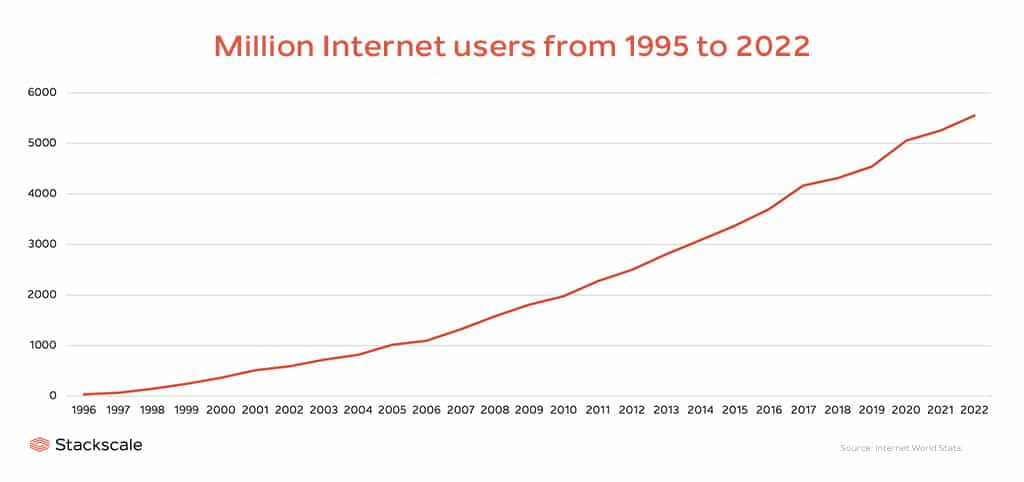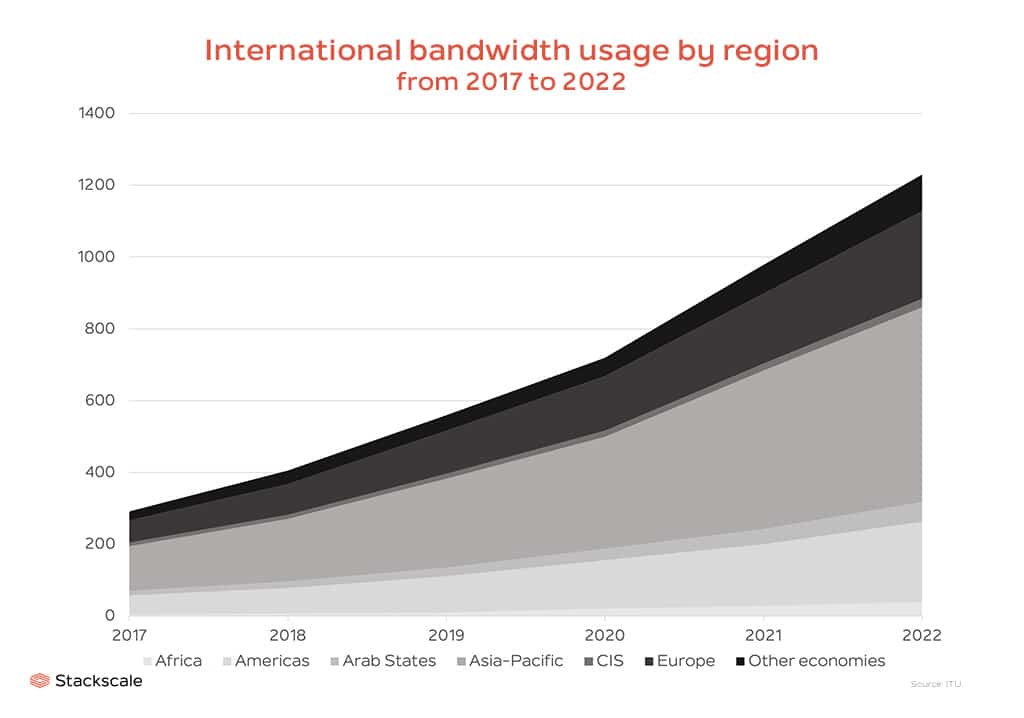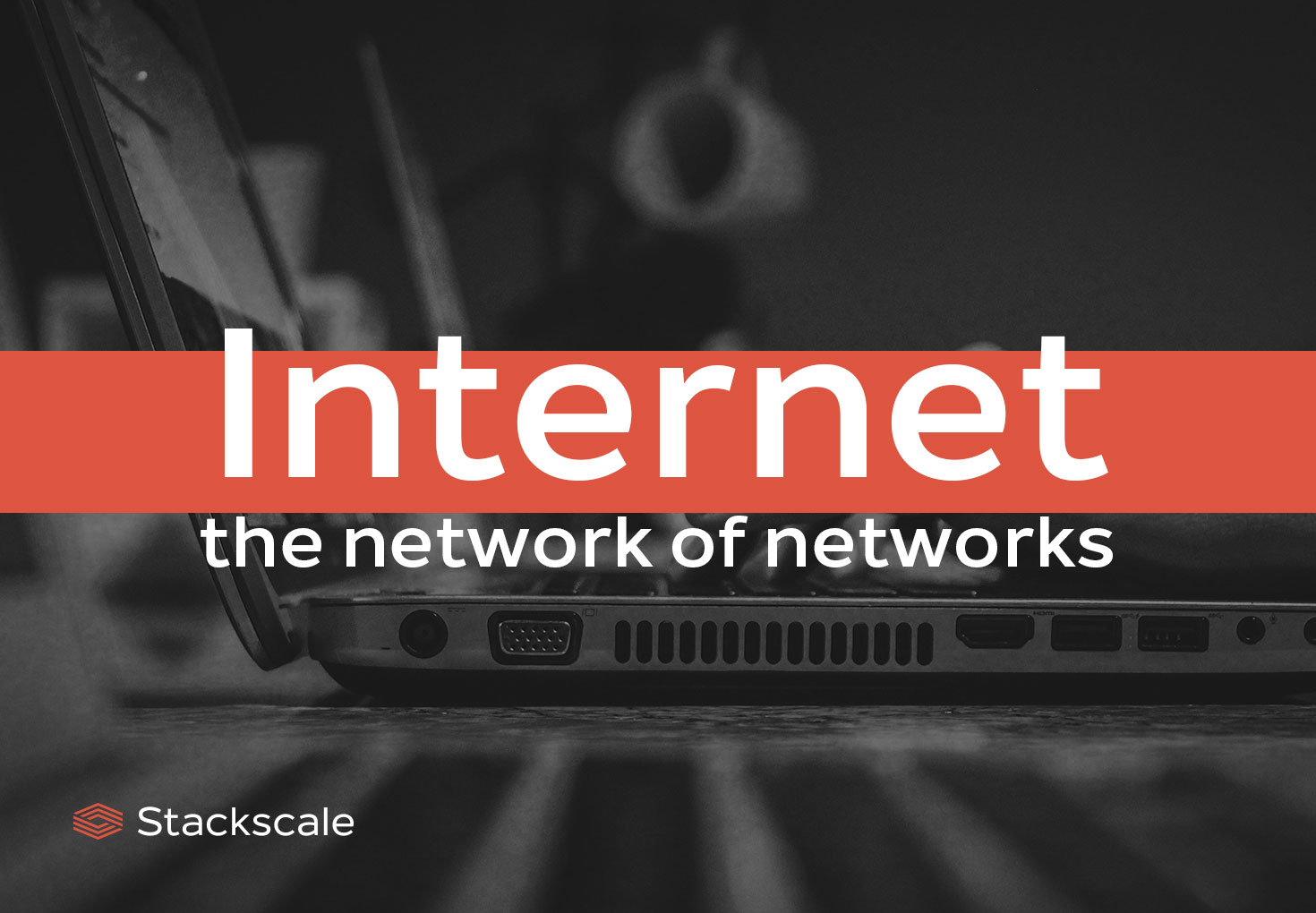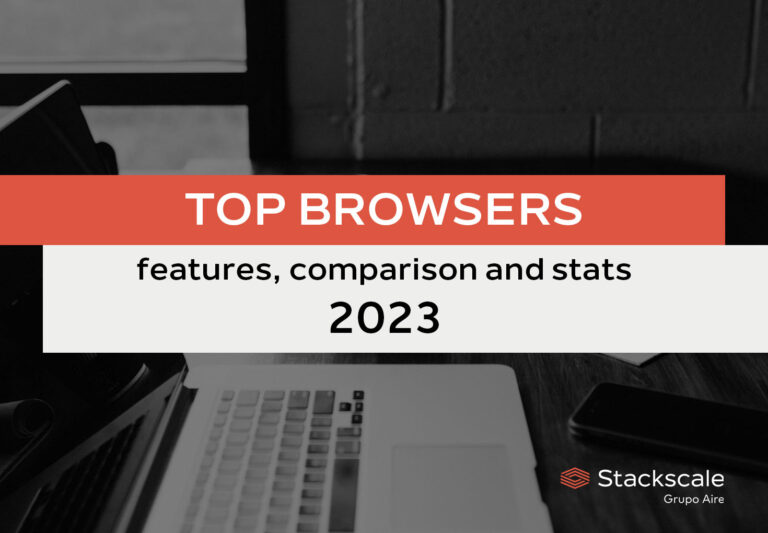The Internet has evolved unstoppable since its origins and has become an essential tool for many people around the world — more than 5,500 million individuals use it regularly. It has not only accelerated communications worldwide, but has also enabled new forms of social interaction.
Here are some interesting statistics and facts about the evolution of the Internet and its exponential growth.
The Internet: the network of networks
The Internet is a global system of interconnected networks — public, private, academic, government and business. It is also commonly known as the “network of networks”, and it is not to be confused with the World Wide Web.
Nowadays, the Internet is based on huge data centers and infrastructures such as Internet Exchange Points (IXPs) that help accelerate communications among all of the networks that integrate it. However, it is also worth mentioning its origins and foundations: ARPANET and the TCP/IP protocol suite.
ARPANET
ARPANET, short for Advanced Research Projects Agency Network, was a precursor network of the Internet, initially intended as a backbone for interconnecting regional academic and military networks in order to share resources. The project was led by ARPA, the Advanced Research Projects Agency of the US Department of Defense.
The TCP/IP protocol suite
The TCP/IP or Internet protocol suite provides end-to-end data communication, by organizing the set of communication protocols used in the Internet and other similar computer networks. The Internet uses the TCP/IP protocol suite to transfer data between networks and devices.
Open Internet and Net Neutrality
Back to the present, as the Internet has gained popularity and become part of our daily lives, numerous questions have arised as well. This is the case of the Open Internet and Net neutrality or Network Neutrality.
The Open Internet and Net neutrality principles establish that ISPs must treat all Internet traffic equally, without any discrimination, blocking or prioritization. It is to say, users are not charged different fees depending on the content, website or application they access.
The term “net neutrality” was coined by Tim Wu, professor of law at Columbia University in 2003.
New paradigms and phenomena
Moreover, new trends such as the Internet of Things (IoT) or Artificial Intelligence (AI) raise awareness about new issues and phenomena. For instance, the exponential growth in the number of connected IoT devices has led to new paradigms such as edge computing and the huge growth in enterprise data due to data-intensive applications has drawn attention to the data gravity phenomenon.
Internet users growth from 1995 to 2022
One of the statistics that clearly shows its exponential growth of the Internet is the number of global users.The number of users worldwide has experienced astonishing growth over the last decades. From 1995 to 2022, the number of Internet users around the world has rocketed from 16 millions to more than 5,500 millions, according to Internet World Stats.

| Year | Number of Internet users |
| 1995 | 16 million users |
| 1996 | 36 million users |
| 1997 | 70 million users |
| 1998 | 147 million users |
| 1999 | 248 million users |
| 2000 | 361 million users |
| 2001 | 513 million users |
| 2002 | 587 million users |
| 2003 | 719 million users |
| 2004 | 817 million users |
| 2005 | 1,018 million users |
| 2006 | 1,093 million users |
| 2007 | 1,319 million users |
| 2008 | 1,574 million users |
| 2009 | 1,802 million users |
| 2010 | 1,971 million users |
| 2011 | 2,267 million users |
| 2012 | 2,497 million users |
| 2013 | 2,802 million users |
| 2014 | 3,079 million users |
| 2015 | 3,366 million users |
| 2016 | 3,696 million users |
| 2017 | 4,156 million users |
| 2018 | 4,313 million users |
| 2019 | 4,536 million users |
| 2020 | 5,053 million users |
| 2021 | 5,252 million users |
| 2022 | 5,544 million users |
The Opte Project, by Barrett Lyon, offers an interesting view of the evolution of the network of networks from 1997 to 2021. Besides, its rapid growth is also noticeable in facts such as the depletion of IPv4 or the significant growth in Internet traffic globally.
International bandwidth usage by region from 2017 to 2022
International bandwidth usage also shows a significant increase over the years, according to data from ITU. The total international bandwidth usage has surpassed 1200 Tbit/s by 2022, as shown in the graph below.

Asia-Pacific, Europe and Americas are the leading regions in terms of international bandwidth usage. However, Africa is the region that has experienced the highest growth in 2022 (+39%), followed by the Americas and the Arab States (+30%), other economies (+27%), Europe (+25%), Asia-Pacific (+22%) and CIS (+20%).
| 2017 | 2018 | 2019 | 2020 | 2021 | 2022 | |
| Africa | 5 Tbit/s | 7 Tbit/s | 10 Tbit/s | 21 Tbit/s | 28 Tbit/s | 39 Tbit/s |
| Americas | 52 Tbit/s | 71 Tbit/s | 101 Tbit/s | 135 Tbit/s | 172 Tbit/s | 224 Tbit/s |
| Arab States | 13 Tbit/s | 18 Tbit/s | 24 Tbit/s | 32 Tbit/s | 42 Tbit/s | 55 Tbit/s |
| Asia-Pacific | 124 Tbit/s | 175 Tbit/s | 248 Tbit/s | 311 Tbit/s | 442 Tbit/s | 542 Tbit/s |
| Commonwealth of Independent States (CIS) | 11 Tbit/s | 11 Tbit/s | 13 Tbit/s | 17 Tbit/s | 20 Tbit/s | 24 Tbit/s |
| Europe | 61 Tbit/s | 86 Tbit/s | 120 Tbit/s | 152 Tbit/s | 195 Tbit/s | 244 Tbit/s |
| Other economies | 26 Tbit/s | 38 Tbit/s | 44 Tbit/s | 52 Tbit/s | 80 Tbit/s | 102 Tbit/s |
Social media
Social interactions have also been accelerated through Social Media usage. A huge amount of actions are generated on the Internet in 1 minute, for instance:
- About 600,000 tweets are sent.
- More than 5,7 million videos are watched on YouTube.
- About 188 million emails are sent.
To sum up, the network of networks continues to expand and gain popularity among citizens worldwide. This growth also contributes to accelerating digitization processes and encourages the adoption of new technologies and services.





